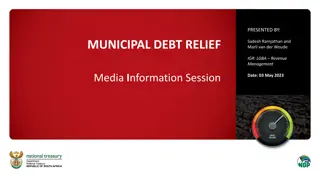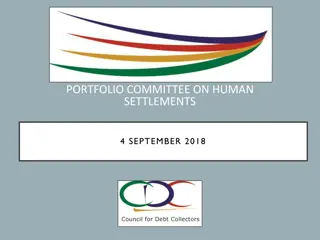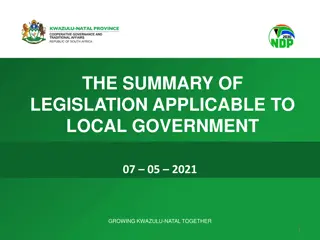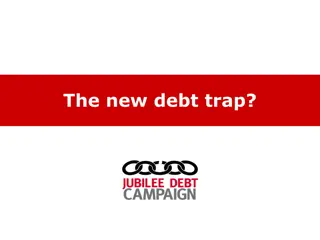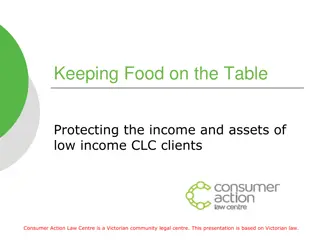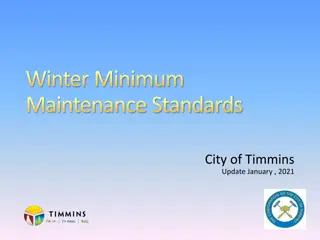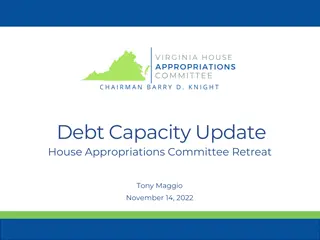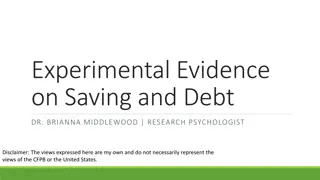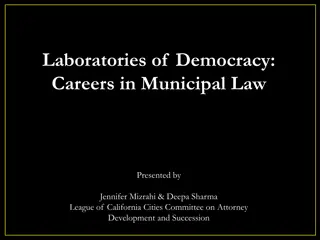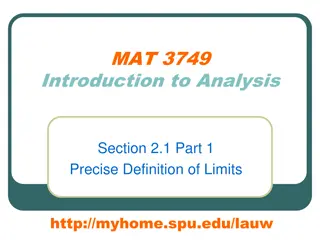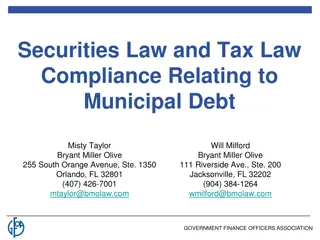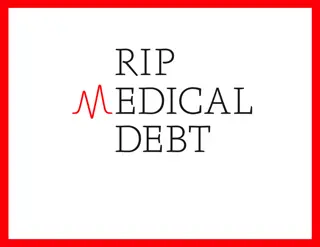Understanding Types of Municipal Debt and Debt Limits
Explore the various types of municipal debt such as General Obligation (GO) Debt, Revenue Debt, and Special Assessment Debt. Learn about Lease-Purchase Agreements, Certificates of Participation (COPS), Federal and State Loans, Refunding Bonds, and short-term borrowing options like TANs, BANs, RANs, and GANs. Discover the debt limits governing General Obligation (GO) Debt and Constitutional Debt Limits with a focus on Washington State.
Download Presentation

Please find below an Image/Link to download the presentation.
The content on the website is provided AS IS for your information and personal use only. It may not be sold, licensed, or shared on other websites without obtaining consent from the author. Download presentation by click this link. If you encounter any issues during the download, it is possible that the publisher has removed the file from their server.
E N D
Presentation Transcript
DEBT Types of Municipal Debt Debt Limits Calculating Debt Capacity
Types of Municipal Debt 1. General Obligation (GO) Debt: Secured by the full faith and credit of the local government issuing the debt. The City pledges it s tax revenues to pay debt payments. If a default occurs, the bond owners have a legal claim on all general income. A. Limited tax general obligation (LTGO) bonds (also called councilmanic bonds or non-voted debt), may be issued by Council. B. Unlimited tax general obligation (UTGO) bonds (also called voted debt) must be approved by 60% of the voters, with a voter turnout equal to at least 40% of those who voted in the most recent election. Debt service payments are from an excess levy on property taxes. 2. Revenue Debt: Unlike GO debt, which relies on taxation, revenue debt is guaranteed by specific revenues (Water, Sewer, Storm). 3. Special Assessment Debt: A. Local Improvement District LID: debt repaid from assessments against those who directly benefit from the project. Example: a road improvement project that benefits a specific subset of the population. The City will form an (LID) and assess the property owners.
Types of Municipal Debt continued: difference is that revenue bonds must be issued for ULIDs, and the bonds are backed by both assessments and utility revenues. B. Utility Local Improvement District (ULID): Similar to LID. The primary 4. Lease-Purchase Agreements: Installment payments are made to a vendor or a third party investor over time, acquiring the property (if the City wishes to do so) at the end of the lease period for a nominal payment. 5. Certificates of Participation (COPS): A lease transformed into a marketable security. Underwriters sell shares in the lease to investors who purchase them for the same reason they purchase bonds. Example: LOCAL program of the Office of the State Treasurer. This program aggregates small purchases by several jurisdictions into a single bond to create volume savings on issuance costs. COPS typically finance purchases of equipment that are too small to individually warrant the cost of issuing a bond, and for which conventional bank financing is too expensive. 6. Federal and State Loans: Loans through government agencies such as Department of Ecology (DOE) and U.S. Department of Agriculture (USDA). 7. Refunding Bonds: A procedure where an issuer (City) refinances an outstanding bond issue by issuing new bonds because interest rates have fallen.
Types of Municipal Debt continued: 8. TANs, BANs, RANs, and GANs: TANs (tax anticipation notes), BANs (bond anticipation notes), RANs (revenue anticipation notes), and GANs (grant anticipation notes) are short-term borrowing repaid out of money derived from the source(s) in anticipation of which they were issued or from any money otherwise legally available. Example: GAN for Thornton Overpass project to use as working capital until reimbursed by State grant. Example: RAN for WWTP project to use as working capital until reimbursed by DOE.
Debt Limits General Obligation (GO) Debt Limits: Based on a percentage of taxable property values. A. Constitutional (Washington State Constitution) Debt Limits: The level of debt limitation is separated into non-voted and total debt. Non-voted debt (also called councilmanic or limited tax general obligation (LTGO) cannot be greater than 1.5% of assessed value (AV) of taxable properties in the jurisdiction. Total debt (including voted and non-voted debt) cannot be greater than 5% of AV. However, cities can increase their total debt limit by an additional 5% with voter approval (to a total of 10%) for water and sewer. Constitutional debt limits represent the maximum debt a jurisdiction would ever be allowed.
Debt Limits continued General Obligation (GO) Debt Limits: Debt Limits A. Statutory Debt Limits: Set at a lower level based on the legislature s perception of what is a safe and reasonable amount of debt load to carry. Taken into consideration the cumulative debt impacts of overlapping taxing districts on local communities. 1% 2.50% 1.50% Different government types have different debt limits. Total Debt Non-voted Voted Cities (Ferndale) Non-voted debt (also called councilmanic or limited tax general obligation (LTGO) cannot be greater than 1.5% of assessed value (AV) of taxable properties in the jurisdiction. Total debt (including voted and non-voted debt) cannot be greater than 2.5% of AV. However, cities can increase their total debt limit by an additional 2.5% with voter approval for water and sewer, plus additional 2.5% for open space, parks, and economic development facilities (7.5% total).
Debt Limits continued Revenue Bonds are not subject to constitutional or statutory debt limits. The bond market does limit debt to the amount that enough revenue can be generated to make the bond payments. LIDs are not subject to constitutional or statutory debt limits since the debt payments are paid by property owners.
Calculating GO Debt Capacity Assessed Value (AV) $1,764,597,294 Non-Voted Debt $6,705,267 (.38% of AV) Voted Debt $228,521 (.01% of AV) Current Debt $6,933,788 Overall Debt Limit $44,114,932 (AV x 2.5%) 0.39% ($6,933,788/AV) As % of AV (Max: 2.5%) Total Remaining Debt Capacity $37,181,144 (Overall debt limit minus current debt) Remaining That Can be Used As Non-Voted Debt $19,763,490 (AV x 1.12%) As % of AV (Max:1.5%) 1.12% (1.5%-.38%)
General Obligation Debt Capacity $6,705,267 $19,763,490 $228,521 Non-Voted Debt Voted Remaining Non-Voted Capacity
Financing in Progress 1) Water and Sewer Revenue Bonds $5.7 million for: A) Water Treatment Plant Upgrade B) Shop Well 2 Well House 2) 2011 Water and Sewer Bond Refunding 3) 2010 Limited Tax General Obligation Bond Refunding 4) Water and Sewer Revenue Bond Anticipation Note (RAN) A) Cash Flow for Wastewater Treatment Plant Upgrade 5) Limited Tax General Obligation Grant Anticipation (GAN) A) Cash Flow for Thornton Project


